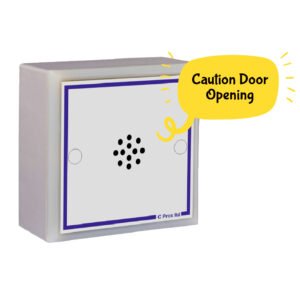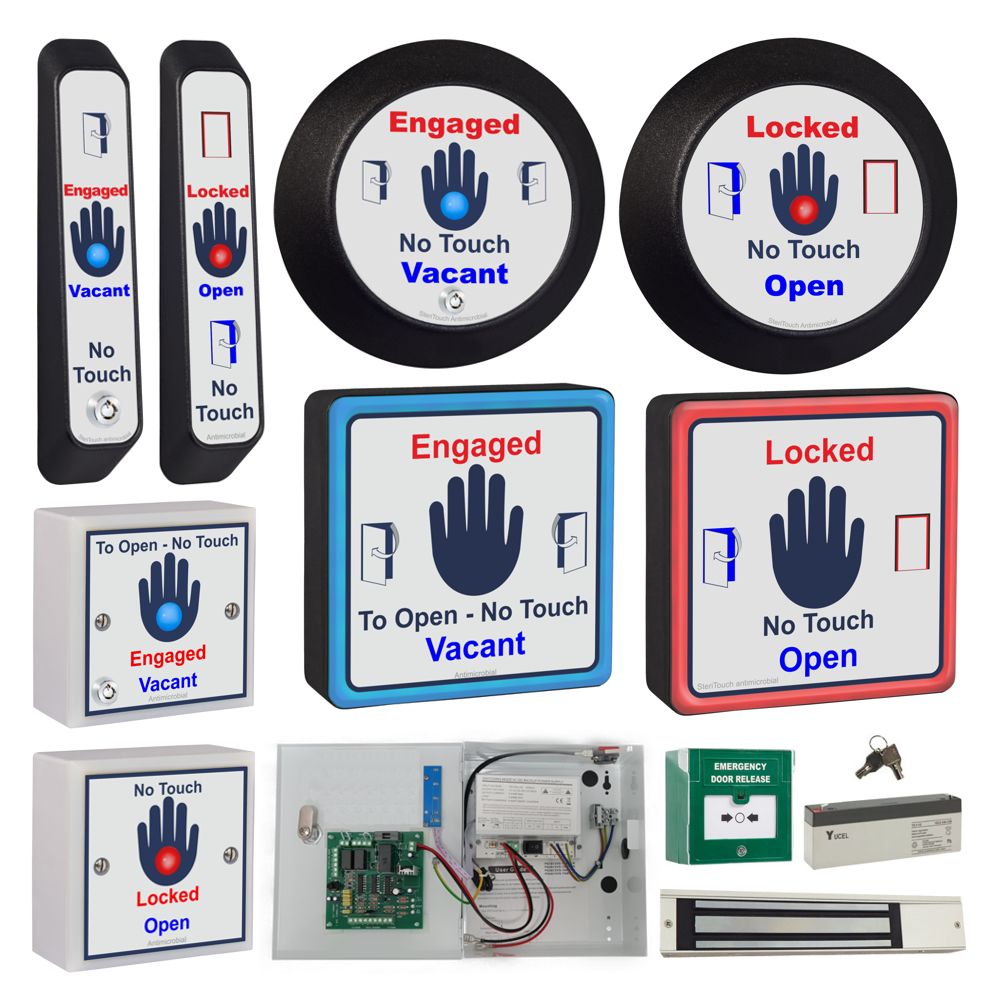Contactless Toilet Door Kit WCKIT-HAND
Contactless Toilet Door Kit
Our touch free disabled persons toilet door opener kit, includes sensors, control PCB, power supply, battery, lock and a break glass. They are an ideal system for disabled toilet doors in offices, public toilets, hospitals , doctors surgeries and shopping centres. Designed for DDA compliance.
Our systems can easily be integrated into a toilet with a manual door, with an existing automatic door opener or you can purchase an operator from us.
Our toilet locking systems are the systems of choice due to their simple, easy to use, reliable and adaptable designs. The switches are ideal for people who struggle with dexterity, because no physical press is needed. Our systems can easily be integrated into a toilet with a manual door, with an existing automatic door opener or you can purchase an operator from us.
Our sensors are no touch but are also protected by SteriTouch®. The label is protected by SteriTouch®, meaning 99.9% of germs will not grow on them.
This system has been installed in the House of Commons, House of Lords, Heathrow and Gatwick airports, plus many more!
How does it work? (Our systems can be used with manual & automatic doors)
-When the door is unlocked you can enter manually or operate the external sensor for assisted entry.
-Once inside the toilet, activate the internal sensor which will lock the door.
-When you are ready to exit, activate the internal sensor again to unlock the door with assisted exit.
Our kits can be incorporated with our remote controls & hands free systems. Contact us for further details or to discuss your individual needs.






BEST PRICE
Prices that are hard to beat!
TRADE ENQUIRIES
Set up an online account or contact us for the current trade prices
GUARANTEED
Next-Day Delivery*
Reviews
You Might Also Like
-

Touch For Assistance Sensor – Square Hardwired SQHELP-KIT
Touch For Assistance Sensor Touch To Help Square hardwired sensor with scratch resistant,...
£101.55Excluding Sales Tax | ShippingBUY NOW -

Door Finger Guard Protection FSR5000 & FSR6000
Door Finger Guard Protection Finger guards help to improve door...
£92.20Excluding Sales Tax | ShippingBUY NOW -

MP3 Audio Message Announcer for WC Systems SGMP3-3
MP3 Audio Message Announcer for WC Systems SGMP3-3 MP3 Message Player - A great addition to...
£60.82Excluding Sales Tax | ShippingBUY NOW




